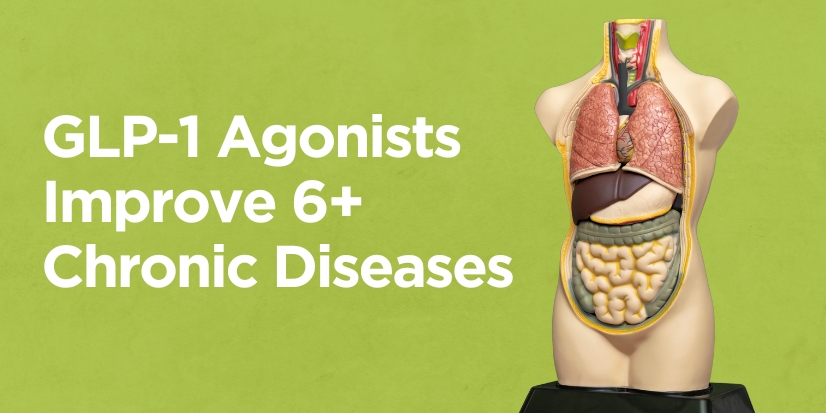The Medical Breakthroughs of GLP-1 Agonists on Cardiometabolic Disease
- Category: Preventative Healthcare, Illness & Injuries
- Posted On:
- Written By: Thomas Clark MD

Since they were first identified as therapeutic agents in 2005, glucagon-like peptide-1 receptor agonists, or GLP-1s, have evolved into a medical breakthrough in diabetes management and its comorbidities. In fact, Science Journal announced GLP-1 agonist research as its 2023 Medical Breakthrough of the Year.
Dr. Thomas Clark is a Physician specializing in Cardiometabolic Medicine at Logan River | Ogden Clinic in Providence. We sat down with him to discuss the strides GLP-1s have made over the last couple years and where research is headed.
Six Comorbidities, One Impressive Therapeutic
While GLP-1 drugs were originally developed to treat diabetes, researchers keep finding additional ways these medications can potentially benefit patients. “There’s ongoing preliminary data showing GLP-1’s effect on lowering blood pressure and decreasing weight, says Dr. Clark. “This is linked to many other comorbidities,” he adds, including:
- Heart attack
- Stroke
- Chronic kidney disease (CKD)
- Non-alcoholic fatty liver disease (NAFLD)
- Sleep apnea (ongoing research)
- Fibrosis (ongoing research)
“The research is impressive. For example, GLP-1s might be our best medication ever for fatty liver disease, with up to a 68% resolution,” Dr. Clark says. The brand name Ozempic® has been shown to reduce kidney disease (protein in urine), stroke, and heart attack. Both conditions are prevalent, with diagnosed liver disease affecting 1.8% of the population and kidney disease affecting 1 in 7 US adults.
Ongoing Research
Dr. Clark and others in the Cardiometabolic space predict that we will soon have more conclusive evidence that GLP-1s are effective in in a variety of other health issues, too.
Sleep Apnea
“There’s a recent study with trezepetide (a semaglutide medication) indicating that it resolved up to 53% cases of sleep apnea,” says Dr. Clark. It’s estimated that 26% of Americans between age 30 and 70 live with this condition.
Liver Fibrosis
Data is on the horizon suggesting that GLP-1s play a role in reversing liver fibrosis. “There’s good evidence, but fibrosis takes years to develop. FDA approval is now being sought for the use of Monjaro® for fibrosis,” Dr. Clark says. A June 2024 Lilly study demonstrated that tirzepatide (brand names Monjauro® and Zepbound®) was superior to a placebo in improving fibrosis with 190 patients over 52 weeks.
The Reverse Snowball Effect
Perhaps the most exciting part of GLP-1s is seeing the lifestyle impact it has on patients. “Each cardiometabolic problem compounds on the next,” says Dr. Clark, “Issues like kidney disease can quickly “snowball” into big problems like heart failure. But the remarkable thing about these medications is that—once you start feeling better—patients start reverse snowballing.” The diseases begin correcting course and, simultaneously, people feel less pain, more mobility, and it’s easier to establish lifestyle habits from there.
------

Dr. Thomas Clark is Board Certified in Cardiometabolic Medicine and enjoys seeing patients for diabetes management, kidney disease, liver disease, and other chronic conditions. Learn more about Dr. Clark or schedule a visit with him in Logan, Utah here.